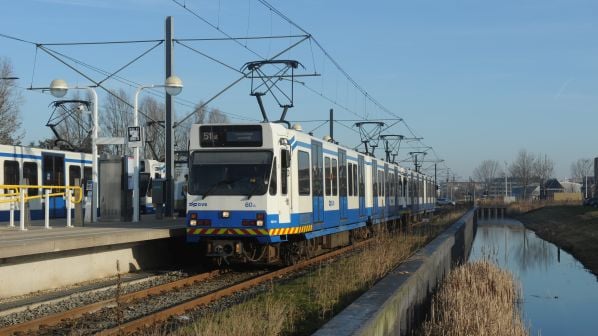The Amstelveen line opened in 1990 as a hybrid system for operation by conventional trams and light metro trains with through running over the Amsterdam metro network, which necessitated bi-level station platforms. Most of the line follows the central reservation of the Beneluxbaan highway and has many level crossings. Despite traffic lights controlling the level crossings, there have been frequent collisions with road vehicles.
The existing light metro trains are dual voltage to cope with 750V dc third rail metro operation and 600V dc overhead on the tram section south of Amsterdam South. The vehicles also have retractable plates to bridge the gap between the train and station platform at metro stations where the loading gauge is wider than on the tram section. The switch between metro and tram operation at Amsterdam South often resulted in delays, which badly affected the performance and punctuality of other metro lines sharing the same tracks. The vehicles have also become increasingly unreliable due to their age.
Amstelveen reconstruction
Reconstruction will involve the removal of the high-level platforms, grade separation at three level crossings, the closure of four stations, and the replacement of two adjacent stations with a single tram stop. All station platforms will be 60m long. A tram stabling yard will be constructed at Legmeerpolder, near the terminus at Amstelveen Westwijk.
The rebuilt line will be operated by a fleet of 63 bi-directional 2.4m-wide trams supplied by CAF, Spain, with delivery starting this year and running through to 2022.
The Amsterdam municipality is contributing €225m to the cost of the project, while the Dutch government will provide the remaining €75m.
Uithoorn extension
The Amstelveen Line will also be extended 4km from Westwijk south to Uithoorn. The extension will follow the route of a former railway, which closed in 1950. Work will start once the reconstruction of the Amstelveen Line has been completed and is due to finish in 2022 at an estimated cost of €60m.

